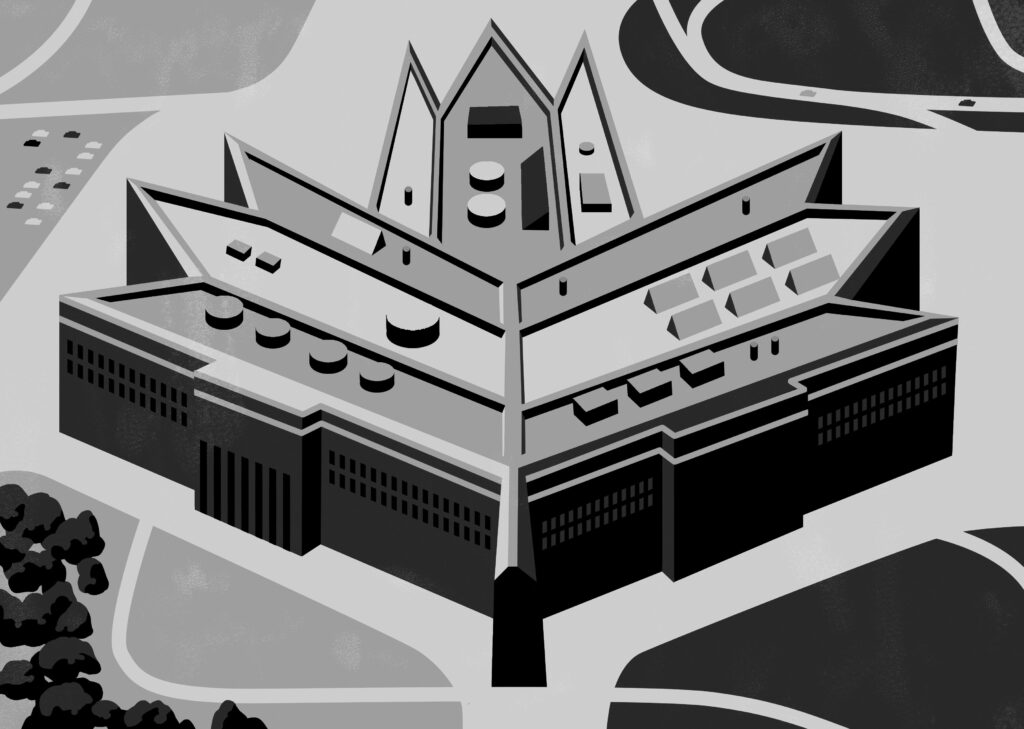Every August, the Canadian Forces College welcomes a new cohort to its National Security Programme. The thirty-odd students typically include fifteen Canadian Armed Forces officers, six public service executives from federal departments with responsibility for security, and eight international officers. Classes are co-taught by academic faculty, mostly civilian but some retired military, and professional mentors, who are recently retired senior officers and public service leaders.
For ten months, members of the cohort learn together, participate in exercises and simulations, and travel to Ottawa and (when the budget allows) around the world to hear directly from the political and public service elite. When the year ends, participants join an alumni association made up of an ever-growing collection of senior leaders in security and defence, both inside and outside of government. Many graduates attend an annual reunion in Ottawa where they network, reconnect, and compare experiences as members of what the historians Alex Souchen and Matthew S. Wiseman call, controversially, Canada’s “military-industrial complex.”
The term comes from the United States, having been made prominent by Dwight D. Eisenhower during his farewell presidential address in January 1961. A retired five-star general and hero of the Second World War, Eisenhower was responsible for a significant buildup of hard power during his eight years in the White House. Although he viewed a strong military as necessary to deter the Communist threat, the increasing size of the U.S. defence industry concerned him. “In the councils of government,” he warned, “we must guard against the acquisition of unwarranted influence, whether sought or unsought, by the military-industrial complex. The potential for the disastrous rise of misplaced power exists and will persist.”

To what extent do politicians, military officials, industry execs, and scholars collaborate?
M.G.C.
His words were prophetic. Today, the U.S. defence industry exerts overwhelming influence throughout Washington. Few elected officials would dare advocate spending cuts in the sector, nor would most Americans countenance them. The aerospace and defence industry alone is worth over $300 billion (U.S.) and supports close to two million jobs spread across nearly all states and territories. Souchen and Wiseman concede that the Canadian defence economy is relatively meagre in comparison, but they insist that we too have a military-industrial complex, “with roots deeply embedded in the historical and contemporary fabric of the nation-state.” Their new collection, Silent Partners: The Origins and Influence of Canada’s Military-Industrial Complex, seeks to further puncture the eroding myth of Canada as a peaceable kingdom.
Some of the book’s authors view the cooperation and collaboration of political leaders, the armed forces, industrial executives, and academics as a pernicious force to be guarded against. Other contributors think such conclusions overreach, and I am inclined to agree with them. As the historian George Stanley put it seventy years ago, Canadians can be an “unmilitary people” and still fight wars. Nonetheless, Silent Partners is a fascinating introduction to elements of a military past that Stanley would never have considered.
Souchen and Wiseman are most interested in the subtle or silent expansion of Canada’s defence apparatus and its implications. They also enable readers to consider the limits of such growth.
The first part of the book showcases a new generation of military history scholars. Souchen leverages his background in the history of science and technology to examine the environmental consequences of Canada’s munitions industry during the Second World War. While traditional accounts of “Minister of Everything” C. D. Howe and his Department of Munitions and Supply emphasize the heroic work of transforming the national economy to support our soldiers, sailors, and aviators overseas, Souchen pays greater attention to long-term ecological damage. To his credit, Souchen does not denigrate the war effort; rather, he offers a richer portrait of the widespread impacts of armed conflict. The chapter also reveals the limits of Howe’s efforts to politicize the government contracting process. Large quantities of ammunition could be made only in factories situated within well-established transportation networks. Montreal and Toronto were therefore natural choices, regardless of the extent of Liberal support in the surrounding ridings. Even more important was access to water, required in nearly every step of matériel production. Water pollution was at times severe, and remediation efforts were uneven.
Brandon Davis delves into the history of the Suffield Experimental Station in Alberta, where chemical and biological weapons were field-tested in the war years. Just as Indigenous peoples in Suffield had been colonized by European settlers in the early twentieth century, Davis argues, so too were those settlers colonized by the military-industrial complex. Although Davis concedes that most Canadians would have recognized that war requires sacrifice, he is frustrated by Ottawa’s unwillingness to compensate the victims of that sacrifice. Like Souchen, he concludes pessimistically, writing that “the principle of sacrificing people and places to the higher needs of military-industrial power quickly became a defining characteristic of Canada’s mid-twentieth-century buildup of defence lands.”
Wiseman and the geographer Matthew Farish’s chapter on the Defence Research Medical Labs, in Toronto, highlights the close and collaborative mid-century relationship between scientists at the University of Toronto, the Defence Research Board, and the Canadian military — one based on shared interests in medical research. University faculty were funded by the board, shared their findings at joint conferences, and even lectured in military professional education programs.
The board’s support of sensory deprivation research, examined by the Royal Military College’s Meghan Fitzpatrick, fuels the book’s strongest chapter. Fitzpatrick draws from a variety of national and international archives to argue that Canadian scientists’ role in the study of brainwashing, sensory deprivation, and isolation was a significant contribution to the Cold War that has never been recognized. This research was initiated in response to the mistreatment of Western prisoners of war in Korean and Chinese camps in the early 1950s. Scientists were investigating strategies that might promote resilience among service members held captive. They learned that sensory deprivation and isolation could have an overwhelming effect on a prisoner in a matter of hours. Their discovery shaped medical research, for good and for ill, for decades. There was value in what Western militaries referred to as conduct-after-capture and resistance-to-interrogation training, but such research also risked real damage to its test subjects and was ultimately used to inform morally questionable offensive interrogation techniques. Fitzpatrick captures the ethical challenges posed by such military research brilliantly.
Asa McKercher recounts Canada’s history as an arms broker and dealer. Beginning after the Second World War, the decision to export munitions to a variety of states, including many with dubious human rights records, troubled Canadian decision makers. Ultimately, though, it was critical to the maintenance of a sustainable domestic arms industry. Canada manufactured its own weapons to support the national manufacturing sector, reduce procurement costs for its military, and contribute to alliance and collective security. Yet this defence industry was unsustainable without a stable roster of international buyers. Restricting sales to allies, most of whom were already subsidizing their own defence industries for similar reasons, was insufficient. Frank Maas adds to McKercher’s explanation in a case study of the origins of General Dynamics Land Systems–Canada, best known today for its involvement in the sale of light-armoured vehicles to Saudi Arabia.
Taken together, these chapters depict, at minimum, close collaboration between political leaders, leading academics, military officials, and federal public servants. Some contributors suggest that these ties were too close; others recognize them as necessary and hardly unusual.
The final chapter, by the retired Royal Canadian Air Force colonel Randall Wakelam, refutes the concept of a Canadian military-industrial complex: “The idea that an effective influential collaboration has existed between the RCAF and the aerospace industry is arguably, and perhaps demonstrably, a figment of the imagination.” Wakelam’s history of the air force’s fighter aircraft procurement program illustrates the weakness of the defence lobby in a country where civilian control of the military is paramount. As for much of the cooperation depicted as so nefarious in some of the earlier chapters, he reminds readers that civil-military collaboration was natural and necessary yet ultimately shaped by the interests of our allies as much as it was by the domestic actors. At least in the RCAF, efforts to advance military interpretations of the national strategic interest rarely succeeded.
Wakelam’s analysis accords with my experience teaching at the Canadian Forces College. Unlike faculty at U.S. war colleges, I have complete academic freedom. I might work for the Department of National Defence, but neither the Canadian Armed Forces nor the government of Canada has any control over what I, or any of my hundred-plus colleagues, say or write. If there is a military-industrial complex in Canada, I have never seen it.
Adam Chapnick is the author of Canada First, Not Canada Alone: A History of Canadian Foreign Policy, due out this fall.

